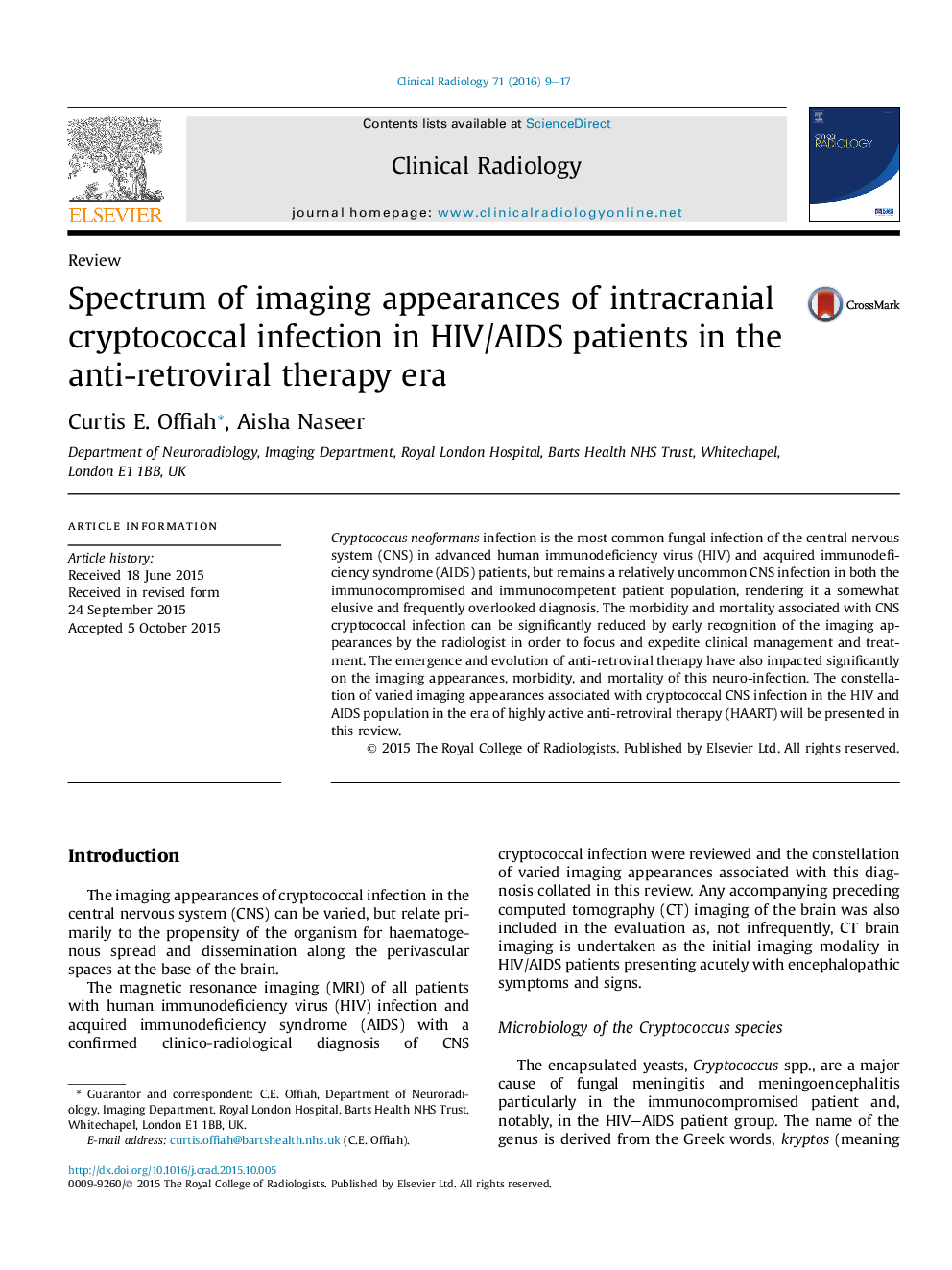| Article ID | Journal | Published Year | Pages | File Type |
|---|---|---|---|---|
| 3981429 | Clinical Radiology | 2016 | 9 Pages |
Cryptococcus neoformans infection is the most common fungal infection of the central nervous system (CNS) in advanced human immunodeficiency virus (HIV) and acquired immunodeficiency syndrome (AIDS) patients, but remains a relatively uncommon CNS infection in both the immunocompromised and immunocompetent patient population, rendering it a somewhat elusive and frequently overlooked diagnosis. The morbidity and mortality associated with CNS cryptococcal infection can be significantly reduced by early recognition of the imaging appearances by the radiologist in order to focus and expedite clinical management and treatment. The emergence and evolution of anti-retroviral therapy have also impacted significantly on the imaging appearances, morbidity, and mortality of this neuro-infection. The constellation of varied imaging appearances associated with cryptococcal CNS infection in the HIV and AIDS population in the era of highly active anti-retroviral therapy (HAART) will be presented in this review.
